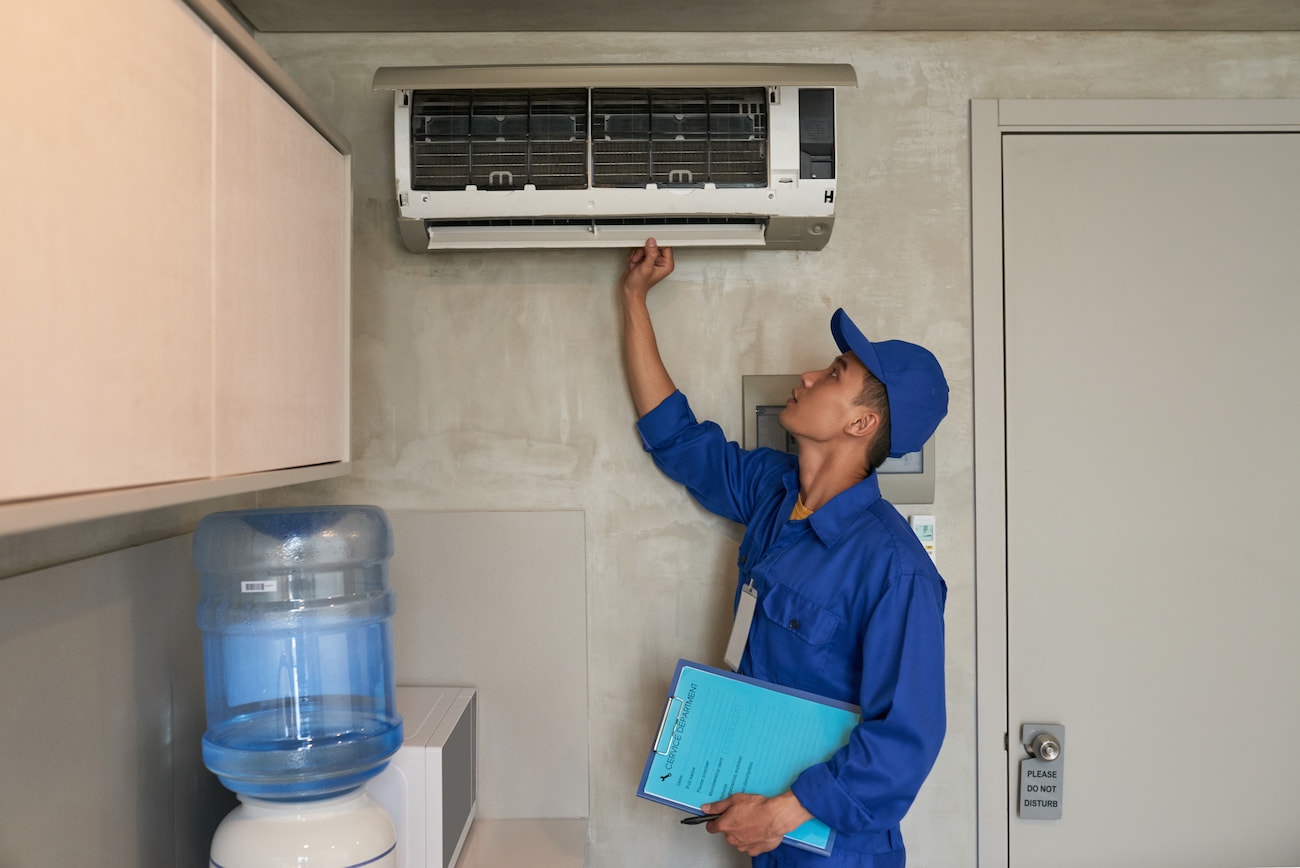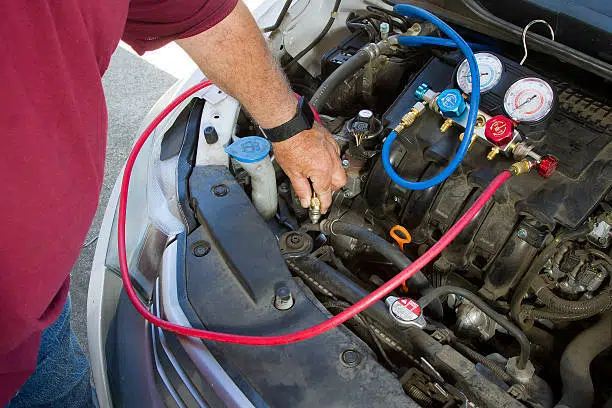
Table of Contents
- What Is AC Recharge, and Why Is It Necessary?
- Signs Your Air Conditioner Needs a Recharge
- Can I Recharge My Air Conditioner Myself?
- How Often Should I Recharge My AC System?
- What Type of Refrigerant Does My Air Conditioner Use, and Is It Environmentally Friendly?
- How to Recharge Home AC?
- How Much Does It Cost to Recharge an Air Conditioner?
- Conclusion
When the sweltering summer heat arrives, we rely on our air conditioners to keep our homes cool and comfortable. However, over time, your trusty AC system may lose some of its cooling power, leaving you in the lurch. This is where air conditioner recharging, also known as refrigerant recharge, comes into play. In our new guide, we will explain how this process is going on, how often you should recharge your AC system, what type of refrigerant your air conditioner uses, and other useful information you may need.
What Is AC Recharge, and Why Is It Necessary?
Air conditioner recharging is a vital maintenance procedure designed to restore your AC system’s cooling efficiency. This process involves adding or replenishing the refrigerant, a special fluid that cools your indoor air by absorbing and releasing heat. Over time, refrigerant levels can drop due to leaks or evaporation, leading to diminished cooling performance. Recharging your air conditioner helps rectify this issue and ensures your home remains comfortable throughout the summer months.
Signs Your Air Conditioner Needs a Recharge
Is your air conditioner not providing the cool relief it once did? If you’re experiencing any of the following signs, it’s a clear indication that your air conditioner may need a recharge. Recognizing these symptoms early can save you from discomfort during scorching summer days and help maintain your system’s efficiency.
Here are the telltale signs that your air conditioner is in need of a recharge:
- Inadequate Cooling: Your AC system doesn’t cool your home as effectively as it used to. You find yourself constantly adjusting the thermostat to maintain a comfortable indoor temperature.
- Extended Cooling Cycles: Your air conditioner runs for longer periods, trying to achieve the desired temperature, which can result in higher energy bills and added wear and tear on the system.
- Increased Electricity Bills: If you notice a sudden spike in your electricity bills without a corresponding increase in cooling comfort, it could be due to a struggling AC system that needs a recharge.
- Ice Buildup: Ice forming on the evaporator coils is a clear sign of low refrigerant levels. The ice inhibits proper heat exchange, making your AC less effective.
- Warm Air Blowing: Your vents are blowing air that isn’t as cool as it should be, or, in severe cases, warm air.
- Hissing or Bubbling Noises: Unusual sounds, such as hissing or bubbling, can indicate refrigerant leaks, which can lead to low refrigerant levels.
- Short Cycling: Your AC system frequently turns on and off in short cycles, which can be a sign of refrigerant issues.
- Poor Humidity Control: In addition to cooling, air conditioners help control indoor humidity. If your home feels excessively humid, it could be linked to a refrigerant problem.
If you observe one or more of these signs, it’s essential to contact a professional AC service to assess your system and determine whether an AC recharge is necessary. Addressing low refrigerant levels promptly can help restore your AC’s efficiency and prevent further damage to your system.
Can I Recharge My Air Conditioner Myself?
A common question is whether you can recharge your AC yourself. The answer is a resounding no. Air conditioner recharging is a job best left to professionals. Attempting to find out how to recharge home AC yourself can result in further damage and safety hazards. Certified HVAC technicians have the expertise and equipment to identify and fix leaks, remove old refrigerant, and add the right amount of refrigerant according to manufacturer specifications.
How Often Should I Recharge My AC System?

AC recharge isn’t just a one-off solution to restore your cooling system’s efficiency; it’s an integral part of routine maintenance. The question of how often you should recharge your AC system doesn’t have a one-size-fits-all answer. The frequency of recharging can vary based on the age of your system, its condition, and whether it’s been properly maintained. Here are some general guidelines to help you determine when to perform air conditioner recharge:
1. Annual Maintenance: Many HVAC experts recommend including an AC inspection and potential recharge as part of your annual maintenance routine. This proactive approach can identify and address refrigerant issues before they affect your comfort.
2. Older AC Systems: As air conditioning systems age, they may become more prone to refrigerant leaks and decreased efficiency. Older systems might require more frequent recharges, and technicians may recommend recharging during annual inspections.
3. Proactive vs. Reactive: It’s important to distinguish between proactive maintenance and reactive responses to cooling issues. Proactive maintenance, such as regular check-ups, can extend the time between recharges, while reactive measures might require more frequent recharges if issues aren’t addressed promptly.
4. Efficiency Loss: If you notice a significant drop in your AC system’s cooling efficiency, consider it a sign that a recharge may be necessary. Extended cooling times and higher energy bills can also indicate a decline in refrigerant levels.
5. Leak Detection: Technicians can perform leak detection tests during maintenance visits. If leaks are identified, repairing them and recharging the system should be a priority to prevent further refrigerant loss.
Remember that proper maintenance not only ensures efficient cooling but also prolongs the lifespan of your air conditioner. Reach out to HVAC Service Solutions today for professional air conditioner maintenance in Canada and give your AC unit some love and care it needs.
What Type of Refrigerant Does My Air Conditioner Use, and Is It Environmentally Friendly?
Refrigerants are at the core of air conditioning systems, and understanding their types and environmental impact is crucial. Two of the most commonly used refrigerants are R-410A and R-22. R-410A, known as Puron, is an eco-friendly alternative to the older R-22, also referred to as Freon.
R-410A is a hydrofluorocarbon (HFC) refrigerant that has become the industry standard due to its minimal impact on the environment. It has replaced R-22, an older hydrochlorofluorocarbon (HCFC) refrigerant. R-22 is being phased out in many countries because of its harmful ozone-depleting potential. Understanding the type of refrigerant your AC system uses is essential, as newer, more environmentally friendly options like R-410A contribute to a greener and more sustainable future for air conditioning.
How to Recharge Home AC?
The air conditioner recharge process is a meticulous procedure that should only be carried out by certified HVAC technicians. It involves several essential steps to ensure your air conditioning system operates at peak efficiency and provides optimal cooling comfort. Here’s a more detailed breakdown of the recharging process:
1. Initial Assessment: The process typically begins with a thorough inspection of your air conditioning system. The technician will look for any visible signs of refrigerant leaks, assess the overall condition of the system, and determine the type and amount of refrigerant needed.
2. Leak Detection: If there are any refrigerant leaks detected during the initial assessment, these must be addressed before recharging. Repairing leaks is a critical step to prevent future refrigerant loss and maintain the system’s efficiency.
3. Refrigerant Removal: If the existing refrigerant is outdated, incompatible, or contaminated, it must be safely and responsibly removed from the system. Technicians use specialized equipment to recover and store the refrigerant, ensuring it doesn’t harm the environment.
4. Vacuuming the System: After the old refrigerant is removed, the technician evacuates the AC system to create a vacuum. This step removes any remaining moisture, air, or contaminants from the refrigerant lines, which is essential for efficient operation.
5. Refrigerant Replacement: The new, correct refrigerant is carefully added to the system. The technician adds the precise amount specified by the manufacturer to ensure the AC operates at its designated performance levels.
6. Pressurization and Testing: After recharging, the technician pressurizes the system and performs a series of tests to confirm that it’s functioning as it should. These tests include checking for proper temperature and pressure levels, as well as assessing overall performance.
7. Sealing and Insulation: Any access points or seals that were opened during the process are securely sealed, and insulation is checked to prevent future leaks.
8. Final Assessment: Once the recharging process is complete, the technician performs a final assessment to verify that the AC system is cooling effectively and efficiently.
It’s important to note that recharging an air conditioner is a precise and highly technical procedure, and only certified HVAC professionals should perform it. Find more details about how the AC maintenance process is going on via the link below.
How Much Does It Cost to Recharge an Air Conditioner?

In Canada, the cost of an air conditioner recharge typically falls in the range of $200 to $400. Of course, specific costs can vary greatly depending on various factors. Key factors influencing the cost include the type of refrigerant, the amount of refrigerant needed, the need for leak repairs, and regional differences in service fees.
The type of refrigerant can significantly impact costs, with older refrigerants like R-22 generally being more expensive due to limited availability, while newer eco-friendly options like R-410A are cost-effective alternatives. We recommend consulting with local HVAC service providers to obtain accurate quotes and assess the specific needs of your air conditioning system to determine the final cost.
Schedule a free consultation with us via the link below to get the answer of how much will the AC recharging cost in your particular case.
Conclusion
Air conditioner recharging is a critical maintenance procedure that ensures your cooling system operates efficiently and keeps your home comfortable during the hot summer months. Regular maintenance and addressing low refrigerant levels promptly can extend the life of your AC system, reduce energy consumption, and save you from discomfort.
For professional air conditioner recharging and maintenance services that you can rely on, contact HVAC Service Solutions today. Our certified technicians are here to keep your AC system in peak condition and your home cool and comfortable. Don’t wait until the heat becomes unbearable; reach out to us now for expert assistance.
Share



















